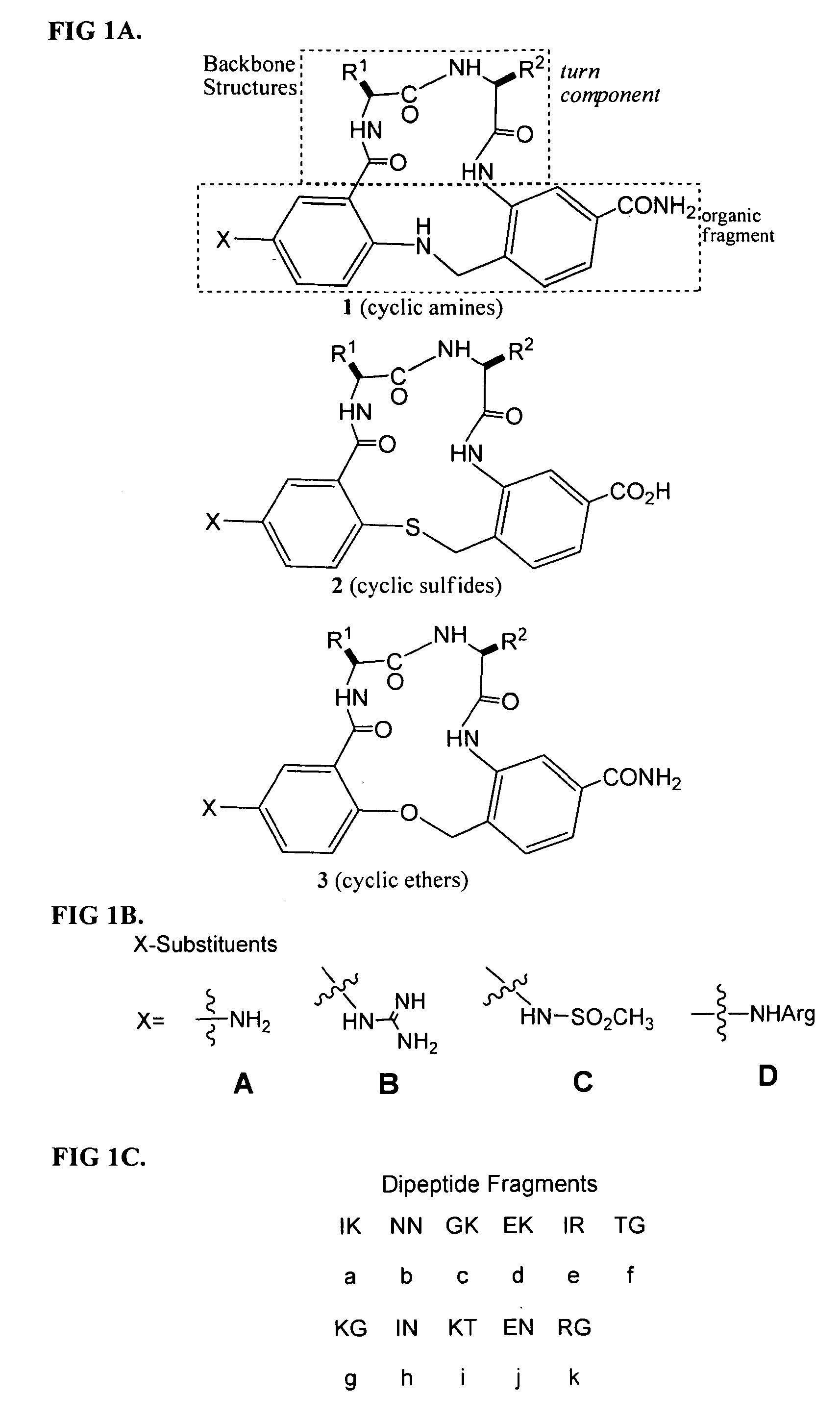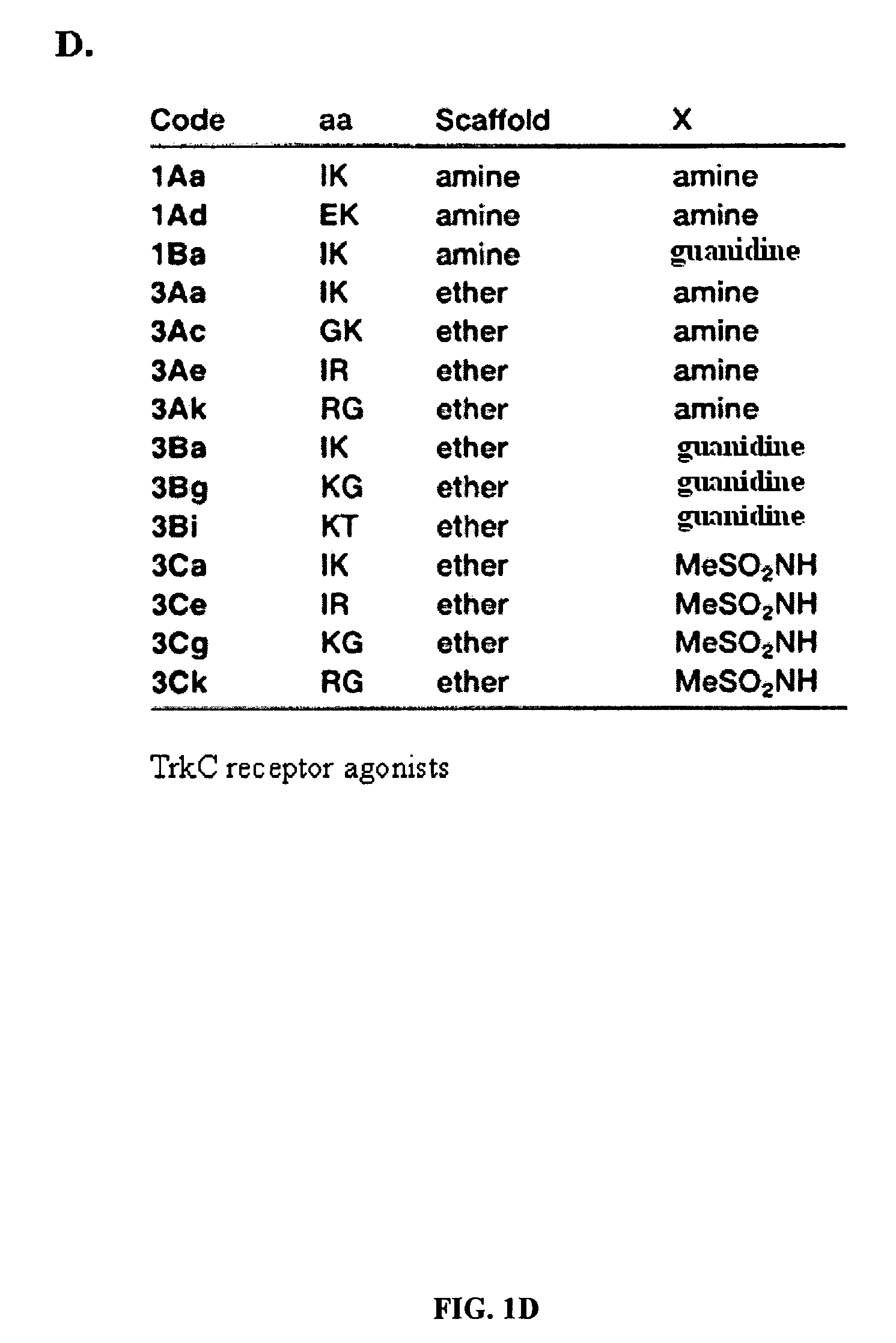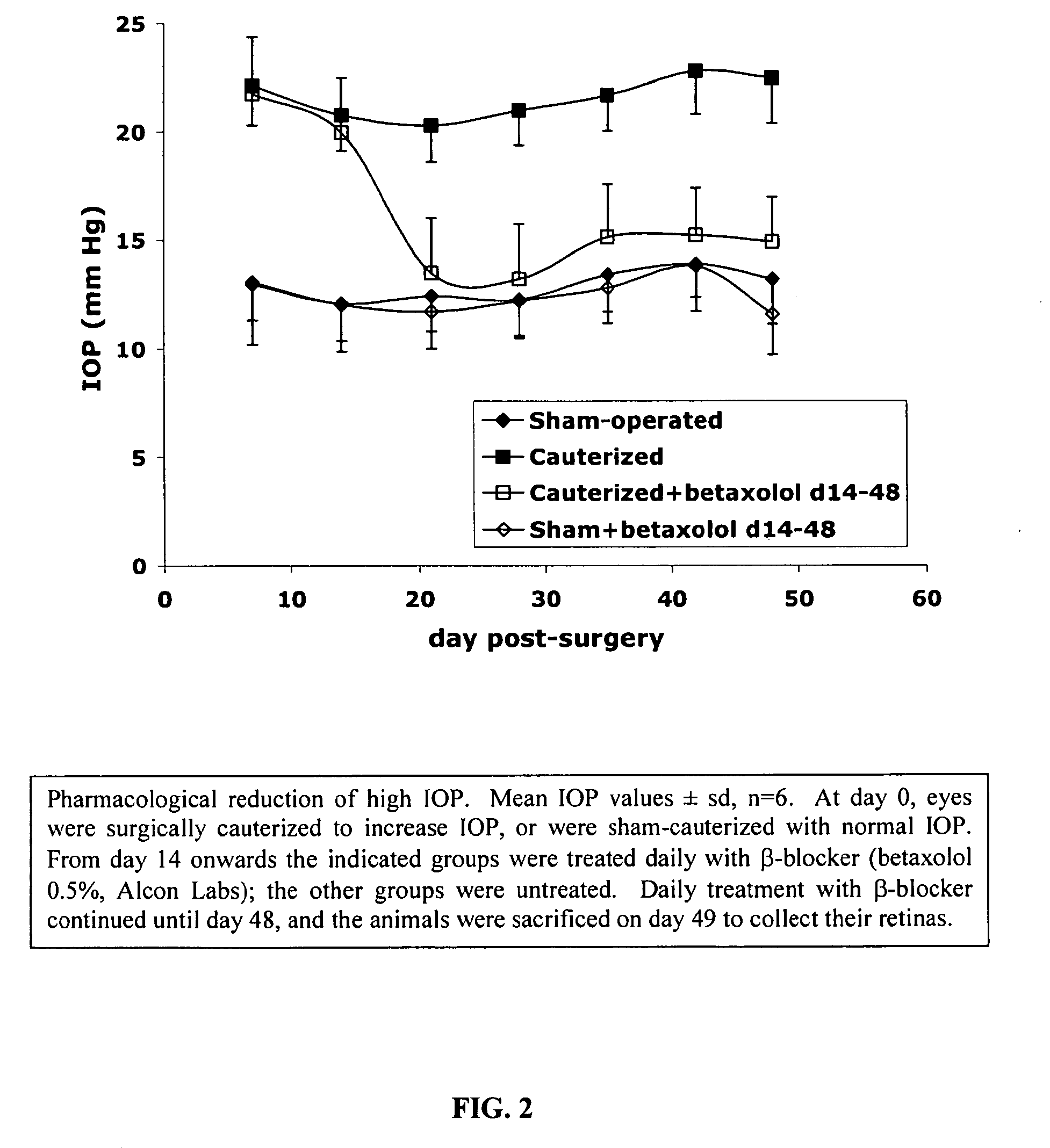Methods of use of trk receptor modulators
a technology of trk receptor and modulator, which is applied in the direction of peptide/protein ingredients, organic active ingredients, cyclic peptide ingredients, etc., can solve the problems of rgc death, general rgc death and visual field loss, and promiscuous activation of trk receptor, etc., and achieves stable and easy administration
- Summary
- Abstract
- Description
- Claims
- Application Information
AI Technical Summary
Benefits of technology
Problems solved by technology
Method used
Image
Examples
example 1
Experimental Model of Ocular Hypertension
Induction and Regulation of High Intraocular Pressure
[0057]High IOP was induced in rat eyes, by reducing aqueous humor outflow through episcleral vein cauterization, while the contralateral eyes were sham-operated and were used as controls (FIG. 2). The IOP of cauterized eyes was significantly higher than control contralateral eyes after vein cauterization (p≦0.01). The mean IOP in glaucomatous eyes was ˜21 mm Hg compared with a mean IOP of ˜12.6 mm Hg in normal eyes. Daily topical treatment with betaxolol starting at day 4 post-cauterization lowered aqueous humor production and reduced high IOP to normal levels within 3 days, but had no significant effect on the normal IOP of non-cauterized contralateral eyes. There were no significant differences in the IOP of cauterized eyes treated with betaxolol versus control normal IOP eyes with or without betaxolol.
Chronic RGC Death Induced by High IOP and Maintenance After IOP Normalization
[0058]Usin...
example 2
TrkA Receptor Agonist Treatment of Ocular Hypertension
In Vivo RGC Protection With Selective TrkA Agonists
[0062]To test TrkA-mediated protection against RGC apoptosis, a small molecule selective TrkA agonist termed D3 was injected intraocularly. D3 was evaluated previously in the CNS, where it was shown to be long-lived and to bind and activate TrkA and to protect the number, phenotype, and function of cholinergic neurons in spatial memory tests. An inactive peptidomimetic with similar structure, termed C59, was used as control.
[0063]The experimental paradigm was designed to emulate progression to glaucoma realistically, to treat pre-existing disease and ongoing RGC damage (see experimental flowchart, FIG. 3). Cauterization was performed to induce high IOP for 14 days, a time point at which ˜8% RGC loss occurs.
[0064]At that point, the TrkA agonist D3, NGF, or controls (i.e., inactive peptidomimetic, saline vehicle) were injected (two independent intraocular injections each of 1 μg co...
example 3
p75 Receptor Antagonist Treatment of Ocular Hypertension
Failure to Protect RGCs in Glaucoma With p75 Receptor Antagonists
[0069]The failure of NGF to protect RGCs in glaucoma may be due to activation of pleiotrophic signals, including signals mediated by the p75 receptors themselves. Thus, a similar experimental paradigm was used to study the p75 receptor antagonist C(28-35) to test the potential effect of p75 receptor activation by endogenous neurotrophins (Table 4). The paradigm was altered slightly to an endpoint of 49 days, and the TrkA agonist D3 was included as a positive control.
Table 4. Failure to Rescue RGCs in Glaucoma With a p75 Receptor Antagonist.
[0070]Each data point represents the average of 4 retinas / experimental group±sd. For clarity, the average IOPs are not shown. Test peptides and peptidomimetics or controls were injected intraocularly. “—” means no injection. Retrogradely labeled surviving RGCs at day 49 post-cauterization were counted in flat mounted retinas.
Int...
PUM
| Property | Measurement | Unit |
|---|---|---|
| angle | aaaaa | aaaaa |
| thickness | aaaaa | aaaaa |
| volumes | aaaaa | aaaaa |
Abstract
Description
Claims
Application Information
 Login to View More
Login to View More - R&D
- Intellectual Property
- Life Sciences
- Materials
- Tech Scout
- Unparalleled Data Quality
- Higher Quality Content
- 60% Fewer Hallucinations
Browse by: Latest US Patents, China's latest patents, Technical Efficacy Thesaurus, Application Domain, Technology Topic, Popular Technical Reports.
© 2025 PatSnap. All rights reserved.Legal|Privacy policy|Modern Slavery Act Transparency Statement|Sitemap|About US| Contact US: help@patsnap.com



